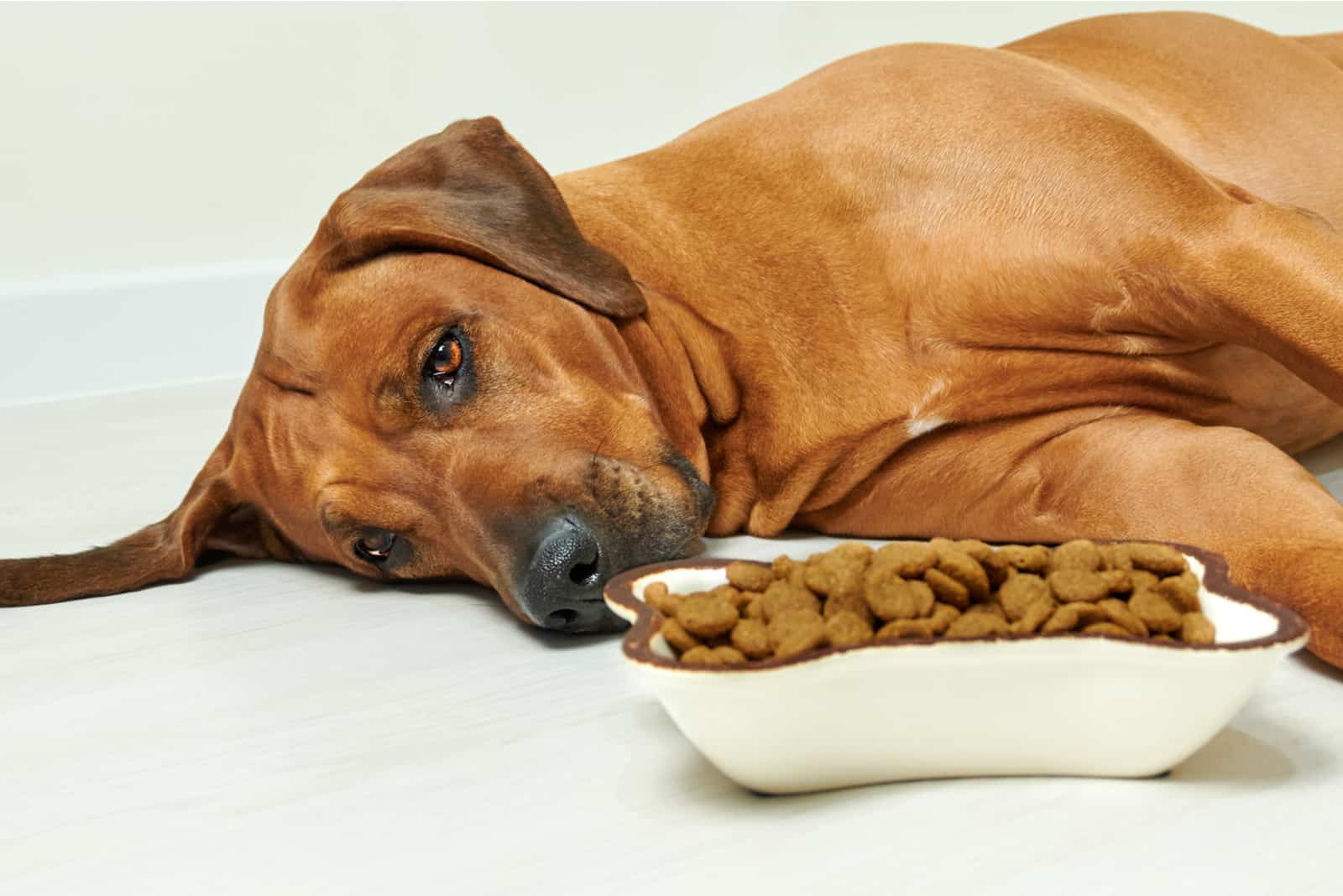We all know that having a dog is a beautiful thing. However, with everything nice, there comes a moment where things get a bit difficult.
Dogs do tend to get sick, which is especially difficult since they don’t talk.
Since they can’t take care of themselves, we as dog owners are here to provide everything needed for their recovery. Even though they don’t speak, they for sure tell us in different ways if there is anything wrong.
One dog’s behavior that may indicate that something is wrong is a lack of appetite. When it comes to this, it’s perfectly normal to ask yourself, ˝What to feed a sick dog with no appetite?˝
Luckily we are here to help you with that. We will also bring up some potential reasons for why your dog may have lost its appetite and how to deal with it.
What To Feed A Sick Dog With No Appetite
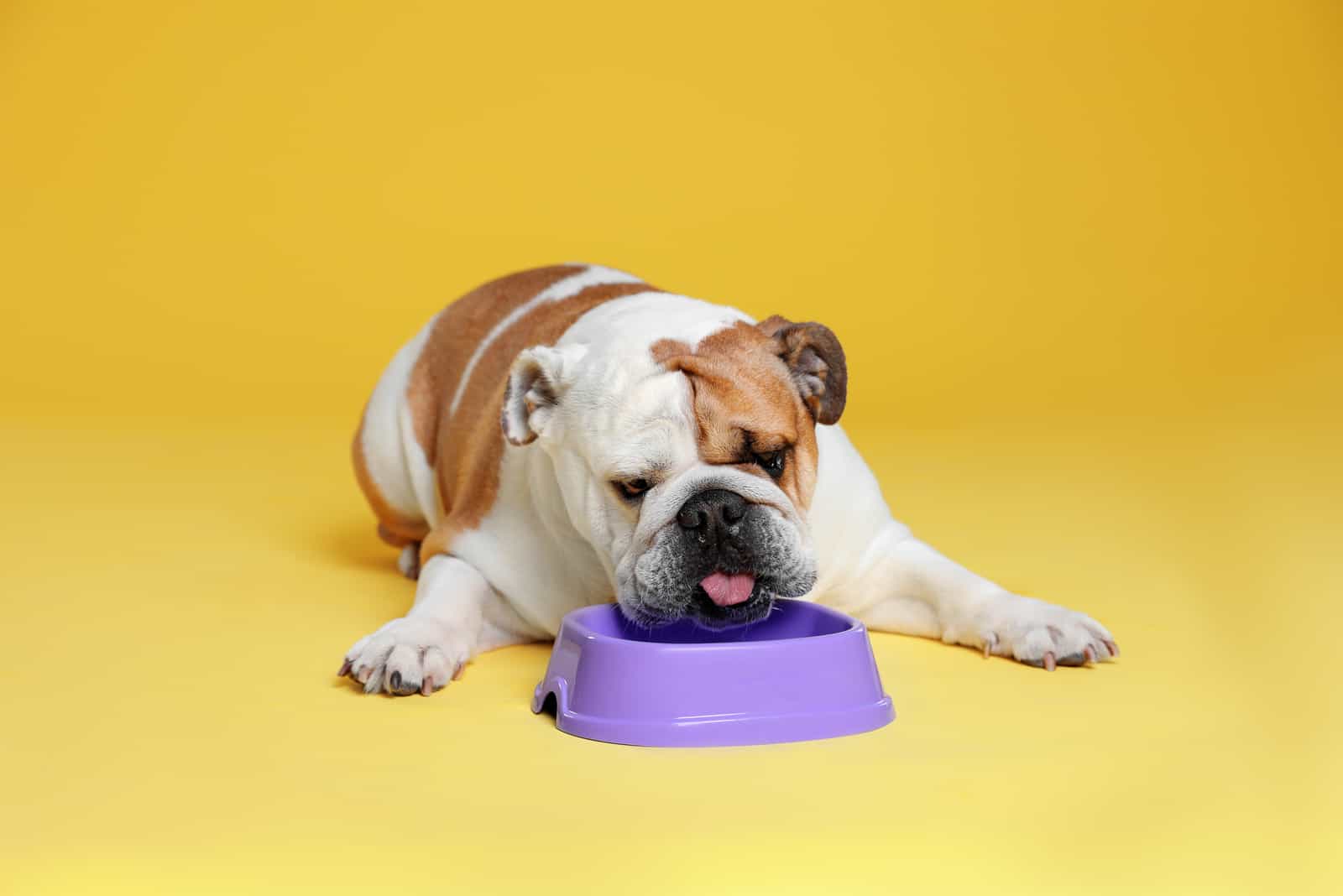
Loss of appetite in dogs can be caused by different factors, which we will discuss later, but the most common one is sickness. In most cases, a dog’s diet needs to be changed and adapted to your dog’s needs at the time.
When talking about a healthier diet, human food is usually what is used. Some people even tried cat food, which is not that bad of an option for smaller dogs. Bigger dogs may not get enough nutrients from cat food.
We made a list of foods you can and cannot give your dog when they have a problem eating.
The Dos
We need to emphasize that you can not add any spices or seasoning to these foods. A bit of salt and olive oil is acceptable.
Here are some foods that may help your dog gain its appetite back, and ease the health issue that it’s facing.
Chicken
Chicken, especially chicken breasts, is the number one ingredient used in the sick dog diet. It comes with a lot of health benefits, so giving your dog chicken may bring it up onto its feet again.
Chicken contains a lot of protein which is good for healthy dogs, not only sick ones. You can put a bit of olive oil on it for extra taste, but not too much.
Make sure to cut the chicken into small pieces, or shred it, so the dog can easily chew and digest it.
Rice
Plain white rice is the second ingredient that your dog can easily eat when having some medical issues. It is often combined with chicken.
You can mix it with kibble, broth, and even wet food of your choice. It is very light so it is rarely given by itself. It is mainly used in extreme digestive system medical conditions.
Brown rice is sometimes suggested, but it was found that some dogs have problems digesting it, so the best thing to do is to consult with the vet.
RELATED: Can Dogs Eat Rice Cakes? Foods We Can Safely Share With Dogs
Wet Food
Wet pet food, or in other words canned food, is one type of food your dog’s stomach will be happy to receive. Because of its texture, it is more appealing than dry food.
It is a lot easier to digest. It has a more intense smell so it may appeal to your dog and it may raise their appetite a bit.
Canned food can come with extra vitamins, like vitamin A, and minerals that can boost your dog’s immune system.
For more advice on wet food for dogs, read our tips on how to make puppy mush.
Human Baby Food
This may sound odd. Don’t worry, veterinarians also use human baby food when they have a dog in hospital care. This type of food is very healthy and mild and it might boost the appetite of your pooch.
Since this is probably going to be new food for your dog, try to start with small amounts. Mix the baby food with a bit of your dog’s food. After that you can use it as a small portioned meal.
Bone Broth Or Chicken Broth
This is an amazing option when your dog has problems with vomiting or food allergies. It gives them the fluid they need especially when they are vomiting, and, more importantly, the nutrients your dog needs to compensate for when not eating.
You can buy it already prepared in a store or you can make it yourself at home. When it comes to store-bought broth, make sure to check the labels. It can contain traces of onion and garlic that can be toxic to dogs.
When making broth at home, the more you cook the beef bones with marrow in the center, or a chicken carcass, the more nutrients will be released into the water. Don’t forget to strain the water before giving it to your dog. There may be a piece of bone left behind that can harm your dog.
Broths are usually used mixed with other food such as rice or dry food because it increases the flavor and nutrients of dry food or whatever else you’re mixing it with.
Pumpkin Or Sweet Potato
These vegetables are amazing if your dog has problems with diarrhea or constipation. They are rich in beneficial nutrients like vitamin A, C, B6, potassium, iron, carotene, and fiber.
Pumpkin seeds are good as dog treats, and they are full of antioxidants. We suggest you use canned pumpkins rather than fresh ones because they can sometimes upset the dog’s stomach if not prepared properly.
When making sweet potato, don’t add any extra flavorings that you usually would add when making it for yourself, especially sugar.
There are some pumpkin powders that can be added to your dog’s food. This is used if your dog isn’t that keen on the taste of pumpkin. The powder usually has less flavor than canned and fresh pumpkin.
Fish
Fish is also a nutritious option for your sick dog. However, the first and most important thing is that you remove all the bones. If you buy a whole fresh fish you need to really open your eyes since the small bones that fishes have can stick in your dog’s throat.
The best options are cooked salmon and tuna (light tuna fish) since they are rich in omega-3 fatty acids. They boost the dog’s immune system and are beneficial for the skin and allergies.
Other fishes that are safe for your dog are flounder, whitefish, whiting, cod, catfish, and herring. Fishes that aren’t safe for your dog are tilefish, swordfish, shark, and albacore tuna fish.
RELATED: Can Dogs Eat Fish Sticks? Healthy Choice Or Big Hazard?
Peanut Butter
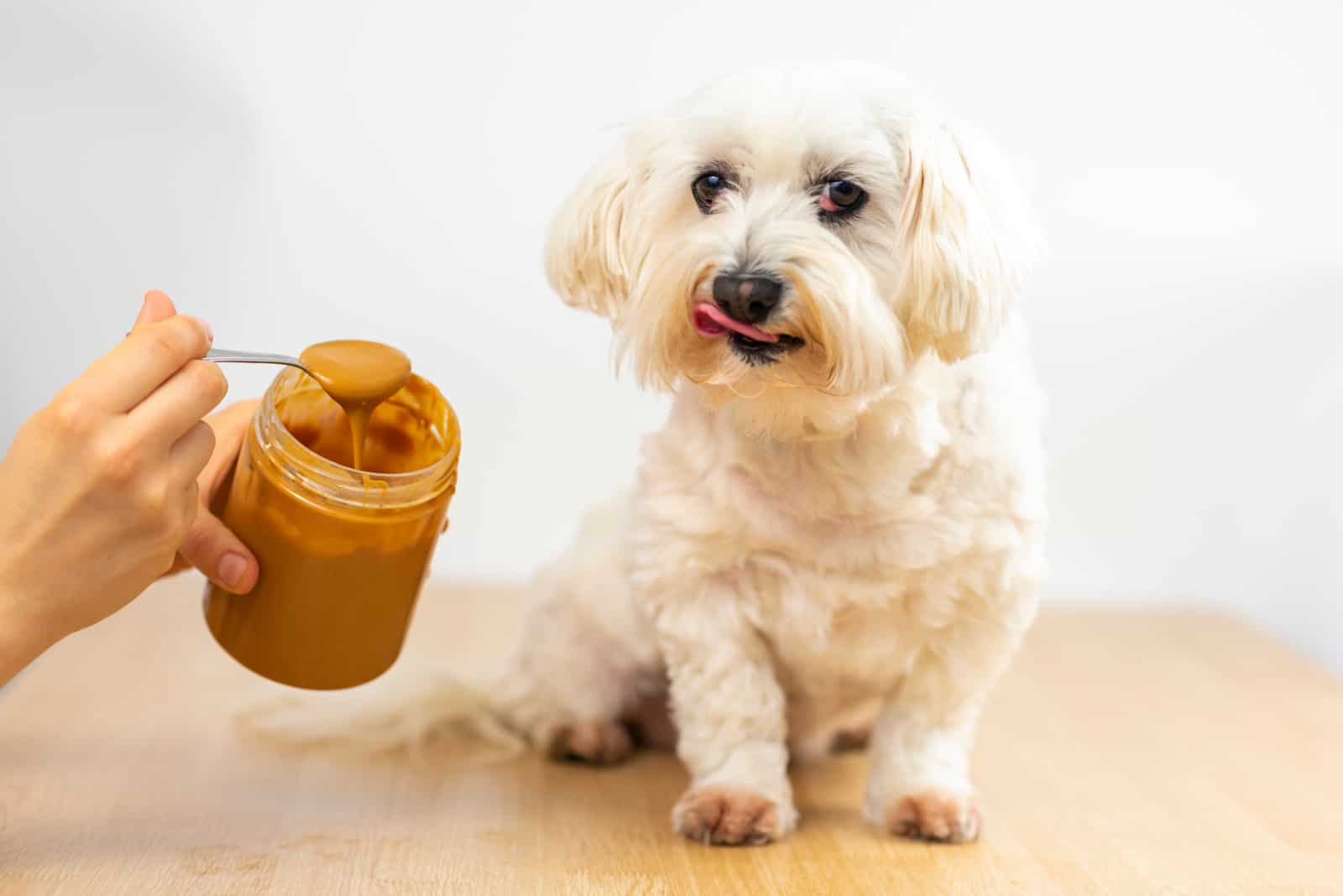
Even though peanut butter made this list, you need to be careful. Peanut butter should be used in tiny amounts just to bring your dog back on his feet a bit quicker and provide extra protein. It is best to mix a teaspoonful with rice and shredded chicken.
Be careful and always check the label. Peanut butter often contains an ingredient called xylitol which is harmful to dogs. It is an artificial sweetener that is used to make a product sugar-free. Always buy peanut butter that doesn’t have xylitol on its label.
Carrot Sticks
Carrots are a tasty low-calorie snack that your dog may enjoy. They are rich in beta-carotene, which produces vitamin A, and fiber. Carrots are usually included in a lot of dog foods.
Keep in mind that if you decide to give them fresh, make sure your dog doesn’t have any dental issues. If you have a senior dog with an upset stomach and dental problems, cook the carrot first so they can eat it easily.
Pedialyte
This is an unflavored drink that is used to help children fight stomach problems and related dehydration. You can also use it for your dog, but we suggest asking your vet first.
It contains electrolytes that are really needed for a dog that has a problem with vomiting and not eating enough.
Scrambled Eggs
Scrambled eggs usually aren’t harmful to dogs, but when it comes to sick dogs you need to be more careful. Eggs contain a lot of protein and essential fatty and amino acids.
They can help settle a dog’s upset stomach but make sure you make them with justa tiny amount of olive oil with no added seasoning, not even salt.
Scrambled eggs should only be an addition to the meal because a meal that only consists of scrambled eggs can cause your dog even more problems.
Apples
Apples are a great source of vitamin A, C, and fiber, but are low on fats and proteins. Because of that, they make an amazing snack option for a senior dog.
Before giving them to your dog, remove the seeds and peel them because the skin and pips can cause even more problems to your dog’s stomach.
Peas
Peas are rich in minerals, vitamins, fiber, protein, and fiber. Peas are also one of the ingredients that many dog owners give to their sick dogs, and they are completely right.
Why we mentioned peas is because we want to emphasize avoiding canned peas, since they contain sodium that can irritate your dog even more.
The Don´ts
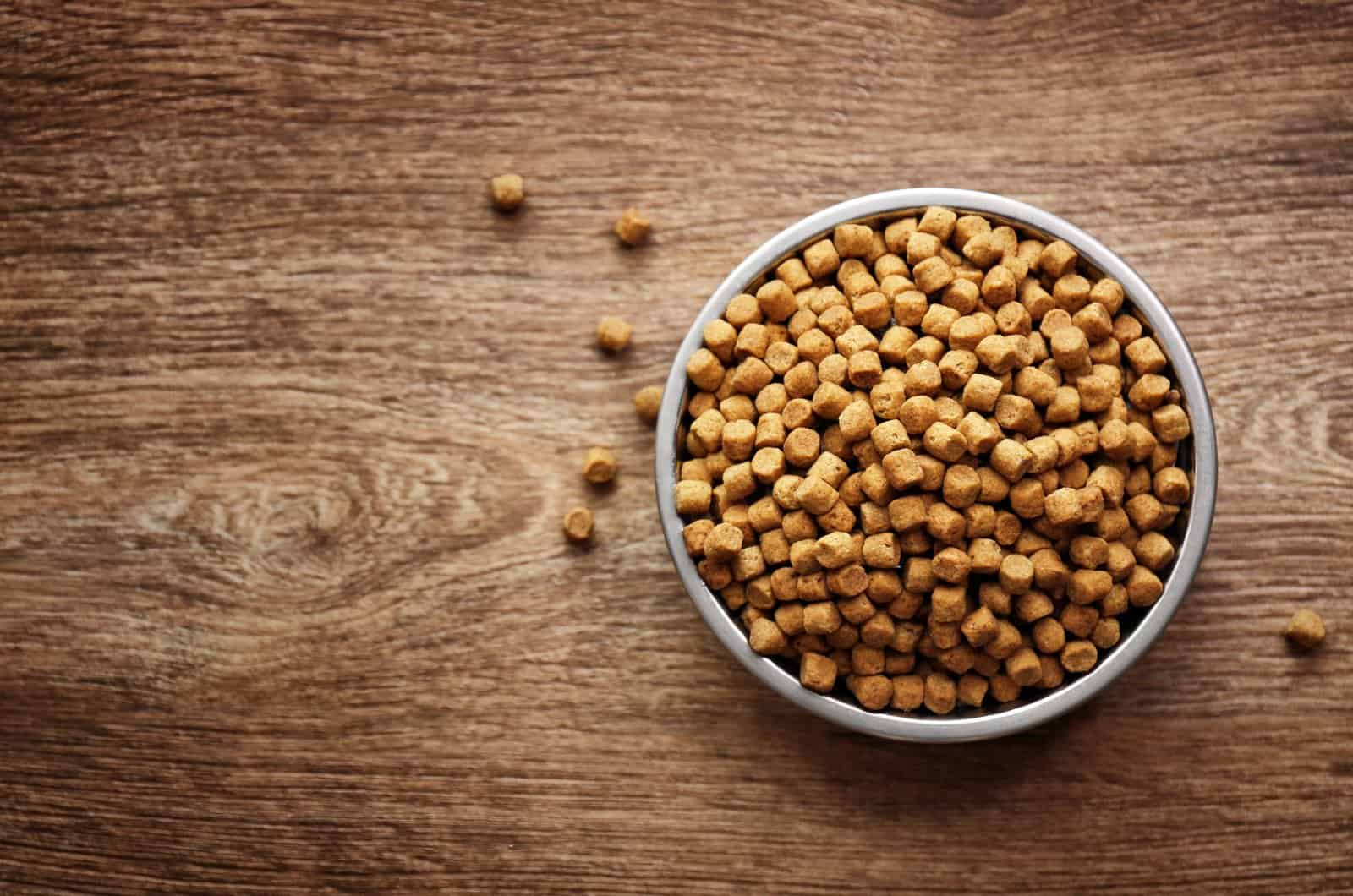
We’ve listed the foods here that are good for your dog, but you have to know that there are some foods that you need to avoid at all costs. Keep in mind that these foods shouldn’t be fed to a healthy dog, let alone a sick one.
Dry food
As we mentioned before, wet food is a better option when your dog has stomach and dental problems. Dry food isn’t as appealing as a wet meal. For a dog that has a dental problem, it can cause even more damage.
A good combination is dry food and broth or a mixture of half wet food, half dried food. Mixing it with these suggestions makes the dry food a bit more chewable and easier to digest. Also, you can read some of our advice on how to soften dog food.
Spicy Food
We believe you already know about this one. Spicy food is a bad choice even for a healthy dog let alone a sick one. Dog’s stomachs aren’t used to spices like we humans are. They don’t digest them properly so a dog that has stomach problems may end up with even more problems.
The only seasoning used can be a bit of salt, but even salt isn’t really recommended when talking about sick dogs.
RELATED: Can Dogs Eat Jalapenos? The Effects Of Spicy Foods On Dogs
Garlic And Onions
Onions and garlic are a big NO when it comes to giving them to your dog, especially a sick one. They can cause red blood cells to rupture, and are the reason why dogs get diarrhea, vomiting, and stomach pain in the first place.
Akitas and Shiba Inus in particular are sensitive when it comes to onions and garlic.
Grapes And Raisins
They can potentially be very bad for dogs. They’re full of sugar that really can cause your dog even more stomach problems than they already have.
Besides stomach problems, grapes and raisins can cause your dog sudden acute kidney failure.
Avocado
Even though avocados make an amazing and healthy snack for dog owners, it can’t be said for dogs too. Avocados contain a toxin that is called persin.
Persin can cause your dog to vomit and have diarrhea which, obviously, is a terrible thing to give your dog that already has those problems.
Reasons Why A Dog’s Appetite May Decrease
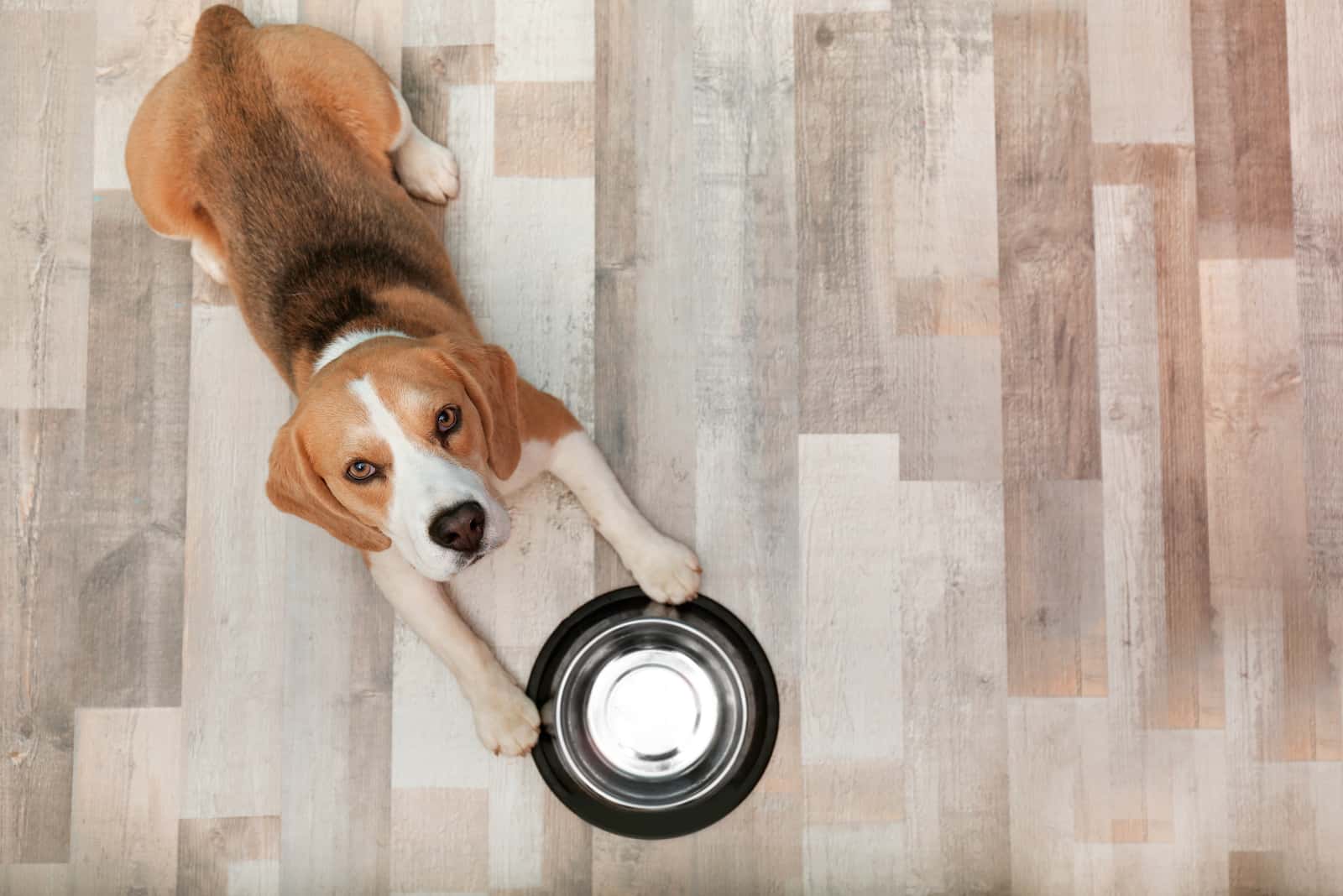
There are a couple of reasons why your dog might not want to eat. We’ve listed the most common ones. Whatever the reason may be, if your dog refuses food for more than 48 hours, make sure to take them to the vet.
Health Problems
When it comes to health problems, we will list some of the sicknesses that may cause your dog’s appetite loss.
• Nausea
• Vomiting
• Dental problems
• Diarrhea
• Liver disease
• Kidney disease
• Intestinal parasites
• Pancreatitis
• Fever
• Cancer
• Congestive heart failure
• Lung disease
Pickiness
If your dog isn’t eating because it is picky, you got lucky. This is a problem that is easily fixed. Some dogs get fed up with the same food, especially if it has been given to them for a long period of time.
Some dogs are so stubborn that they will stop eating and endure hunger for a day or two just to avoid unwanted food. Try changing up their regular food. Either change the kibbles you have been giving them regularly with another brand, or try mixing them with other foods.
Depression And Separation Anxiety
While physical pet health is very important, some dog owners forget about their pet’s mental health. Separation anxiety is mostly connected to your dog not eating when home alone. It can be because they feel an obligation to guard the house so they don’t take time to eat.
Some dogs just don’t feel comfortable eating without a human presence in the home. This isn’t anything to be concerned about if you see them eat when you arrive home. If you are absent for a long period of time, try to give your dog one bigger meal a day so they don’t lack the daily requirement of nutrients.
Depression can be caused because of the loss of a pet friend or human. Depression, besides not eating, can also be linked with your dog sleeping a lot and not having a lot of zest. Try offering them treats, a lot of attention, and long walks.
Sometimes dogs that just come home from kennels can sometimes show depression or separation anxiety which affects their appetite.
Diet Changes
If you’ve changed your dog’s food from one brand to another or from one type of food to another, it can cause them to have an upset stomach. Especially if the change was sudden.
If you want to change your dog’s diet, try doing it gradually over the course of 7 days. This is especially true for older dogs that have become used to a certain type of food.
Environmental
If you’ve recently moved and your dog starts losing its appetite, don’t worry too much. Dogs, as well as humans, can sometimes feel disoriented when coming to a new environment.
Keep a check on your dog’s eating, and don’t let it go for too long. After a day or two of no food, it’s best to go to the vet for a wellness check.
Also, check if your dog possibly ate something that it wasn’t supposed to. Medications left in their reach or a new plant that they possibly nibbled on may cause some stomach problems.
Why Won’t My Dog Eat? Questions That Can Help You
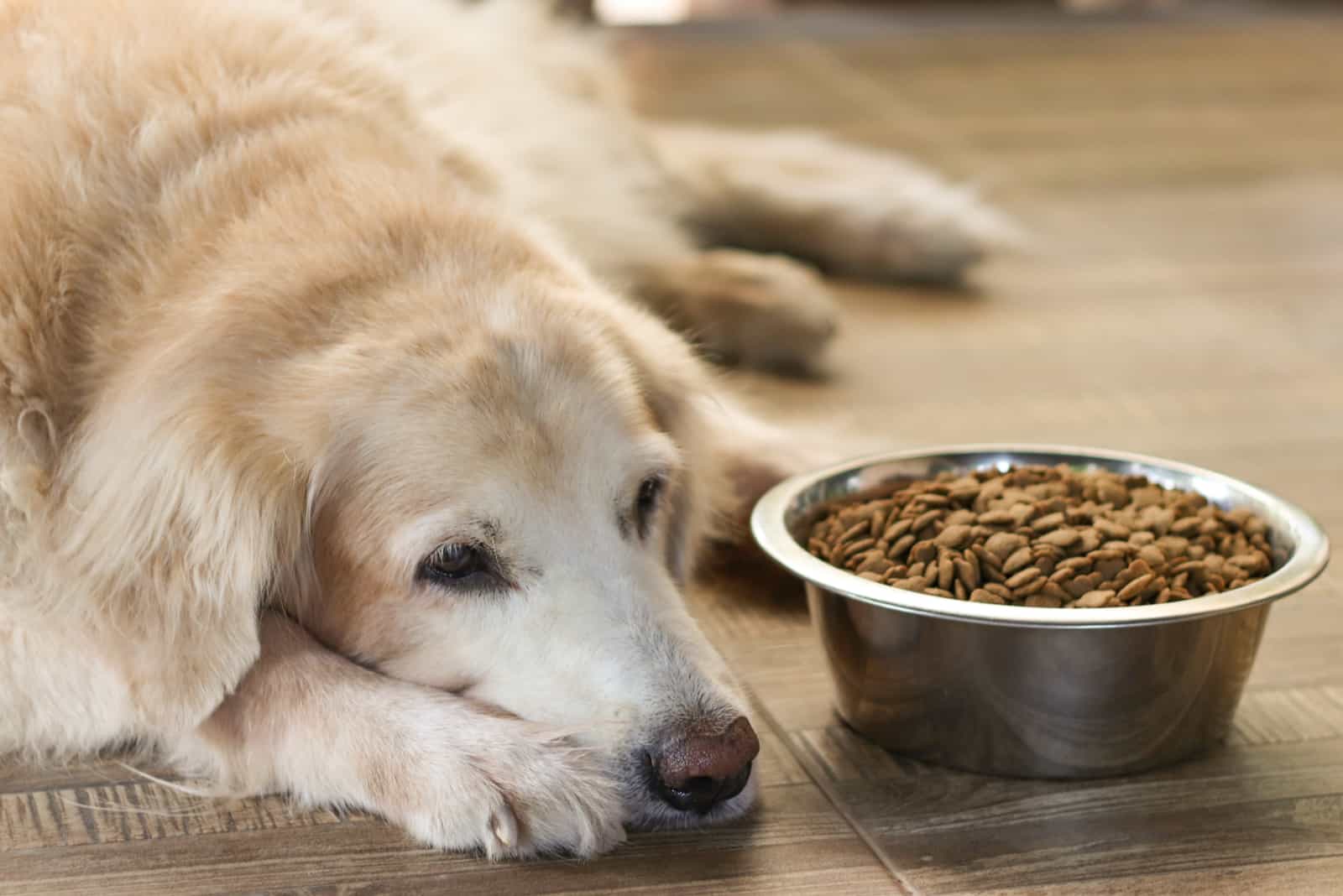
We’ve made a list of questions that may relate to your situation and help you with the problem of your dog not eating. Sometimes it’s good to know that even though your dog’s behavior isn’t as usual, that there is a simple answer to it.
We hope we will ease your worries a bit after reading these.
Does Your Dog Eat Treats But Not Dog Food?
If your dog does not want to eat his food, but will eat treats, there are a couple of reasons this may happen. The first is that they might be a bit addicted to ˝junk food˝ and start ignoring their main meals. Try avoiding giving them any treats for a couple of days.
Second, if you see them being energetic, drinking water, not vomiting, or having diarrhea, it might mean that their meals have more calories than they need. However, keep in mind that dogs are smart and it might just be their tactic for you to give them more treats.
Third, your dog might be sick. Sometimes when they have stomach problems they don’t feel like eating a full meal but can’t resist having a snack or two. If you notice this, take them to the vet
Did Your Dog Get A Vaccine?
If your puppy just got a vaccine shot, it is common for them not to eat for the first 24 hours, so you don’t have to worry. A strange new substance in their body is fighting and developing their immune system.
The body fighting can result in appetite loss or even diarrhea and vomiting. Be near them at all times so they feel more secure and comfortable. If you notice them not getting better after a day or two make sure to take them to the vet.
Your Dog Drinks Water But Still Has A Loss Of Appetite?
If your dog is drinking water and not eating, but doesn’t vomit after consuming water it usually means they have dental problems, their mouth hurts (they made a wound by chewing something sharp) or they have beginning stages of nausea.
Try to examine your dog’s mouth by yourself, or even better take them to the vet for a more thorough examination.
If your dog vomits every time it drinks water, it is quite possible they have a more severe problem. Try taking them to the vet as soon as possible, especially if that lasts more than 24 hours.
Dog Not Eating Breakfast But Does Other Meals?
This just means that your dog doesn’t prefer eating in the morning. For some dogs, it takes longer to develop an appetite throughout the day.
Just make a different feeding schedule by giving them meals a bit later than your first plan.
What To Do When Your Dog Is Not Eating
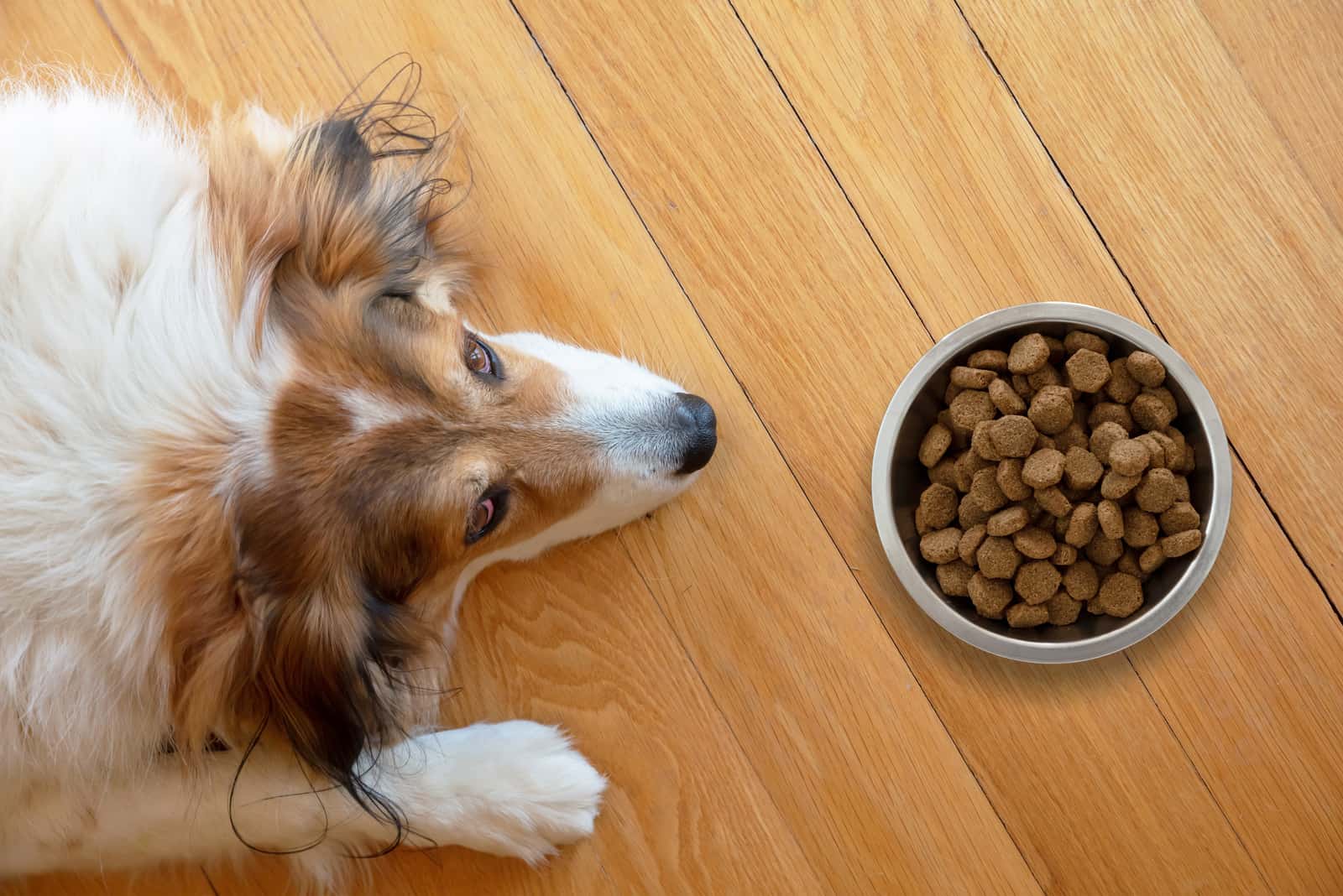
We know that it is stressful when your dog refuses to eat, or doesn’t eat enough. As dog owners, we tend to get panicky because we don’t want to see our dog struggle.
We are here to help you by presenting you with a small list of things you can do to help your dog get through this easier and faster.
Let Them Eat Grass
Dogs eat grass when they have an upset stomach. It is their natural remedy that they eat by instinct. There is a possibility that they may vomit after consuming it. Don’t worry – it’s the way they cleanse and try to solve their stomach problems.
Make sure to offer them water so they don’t get dehydrated. Adding an ice cube or two is good especially if the weather is warm.
However, make sure that eating grass stops after 2 or 3 days. If they vomit every time, take them to a vet after 24 hours.
Change Their Dog Food
This is common, especially with puppies. It takes some time to find the perfect dog food that your dog becomes fond of.
Sometimes your dog may have allergies to some ingredients, so make sure you check with the vet and ask for their suggestion.
Bland Food
This is the best solution for your sick dog. Go back and read our suggestions earlier on in htis article.
Hand-Feeding
This is one option that most of the time does the trick. Your dog feels safer and can sense that you are trying to help them.
If you decide on the wet food option try dabbing your finger in the can and putting the small amount on your dog’s nose or lips. They will instinctively lick it off and get a taste of the food.
Sometimes this trick makes them realize that they are hungry or it stimulates their appetite.
Nothing?
Sometimes when you see your dog being a bit off you just need to let them be for a day. For the first 24 hours, your job is just to observe the dog and be there for comfort.
Try to be around them as much as possible so you can see all the symptoms your dog is experiencing. By collecting all the pieces of information, you can tell them to the vet and make their job easier, so that they can come to a solution sooner.
In Conclusion
Even though there are many reasons why your dog may not be eating, unfortunately, the most common are health issues. It can really get scary and sometimes frustrating seeing your dog weak and not eating.
By reading this article, you have already made a step in the right direction. If any issue goes on for longer than 48 hours, we advise you to see the vet, who can put both you and your dog at ease.
We hope we’ve answered your question, ˝What to feed a sick dog with no appetite?˝ with all the helpful information. We wish your pooch a speedy recovery.
Read Next:
• How To Keep Ants Away From Dog Food: Handy Tips And Tricks
• 7 Vet Approved Homemade Dog Food Recipes For Kidney Disease
• Why Is My Dog Throwing Up Yellow & How To Treat It
